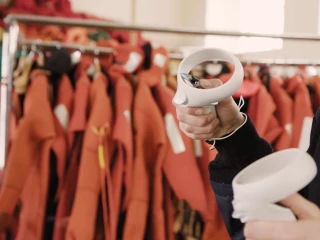/website_rectangle-1080x810-(1).webp?mode=autocrop&w=320&h=240&attachmenthistoryguid=266f9c7f-6931-402a-97f6-ee37ef906c74&v=&focusX=483&focusY=192&c=7e41deda2beb0a3c47821944ad07a16bf8e19707dc17b97b33f317f1ca9f2780)
Training without risk: how VR scales safety-critical skills
- discrete manufacturing
- virtual reality
For a leading international manufacturer in advanced materials and process technologies, training operators on hazardous procedures had become a growing concern. Tasks such as molten metal extraction and reactor vessel maintenance were too risky to practice live and too rare for workers to build lasting confidence. The company’s digitalization lead wanted to find a scalable, safe alternative. Together with delaware, the team turned to virtual reality to unlock immersive training that mirrors real-life scenarios and strengthens safety, speed, and consistency across the board. (8 minute read)


/website_rectangle-1080x810-(12).webp?mode=autocrop&w=320&h=240&attachmenthistoryguid=2d8a32d3-f89d-4249-8dae-3d01bdc70081&v=&focusX=540&focusY=405&c=b4553889408436b0601c5847ec43c259a7fee00f71ec3166e1bf1c6708a82ac9)
/case_hzs-website-(1).webp?mode=autocrop&w=320&h=240&attachmenthistoryguid=baa00e9b-c5b9-4bb9-974d-e9943519c9b7&v=&focusX=1728&focusY=970&c=52effa1add16f917060cff49aa86639876e973ac22ae51aa1872d88ae8d3ed10)

/discrete_manufacturing-banner-3200x500-(1).webp?mode=autocrop&w=320&h=240&attachmenthistoryguid=629d418c-dbf5-4118-a5e9-b73f30493781&v=&focusX=2165&focusY=266&c=63571864ad8e6ac620a19cb48f79c025904b15d83863cda6c5c0cb16f7819dcf)

/Website_Landingpage_VirtualReality_1920x355-(1).webp?mode=autocrop&w=320&h=240&attachmenthistoryguid=894a8486-5fd3-4771-b967-816dd41ed21c&v=&c=adc0fbab79cef194683d743e07fec8b00f2da4d7d2334bf6b56b6249bf553a25)